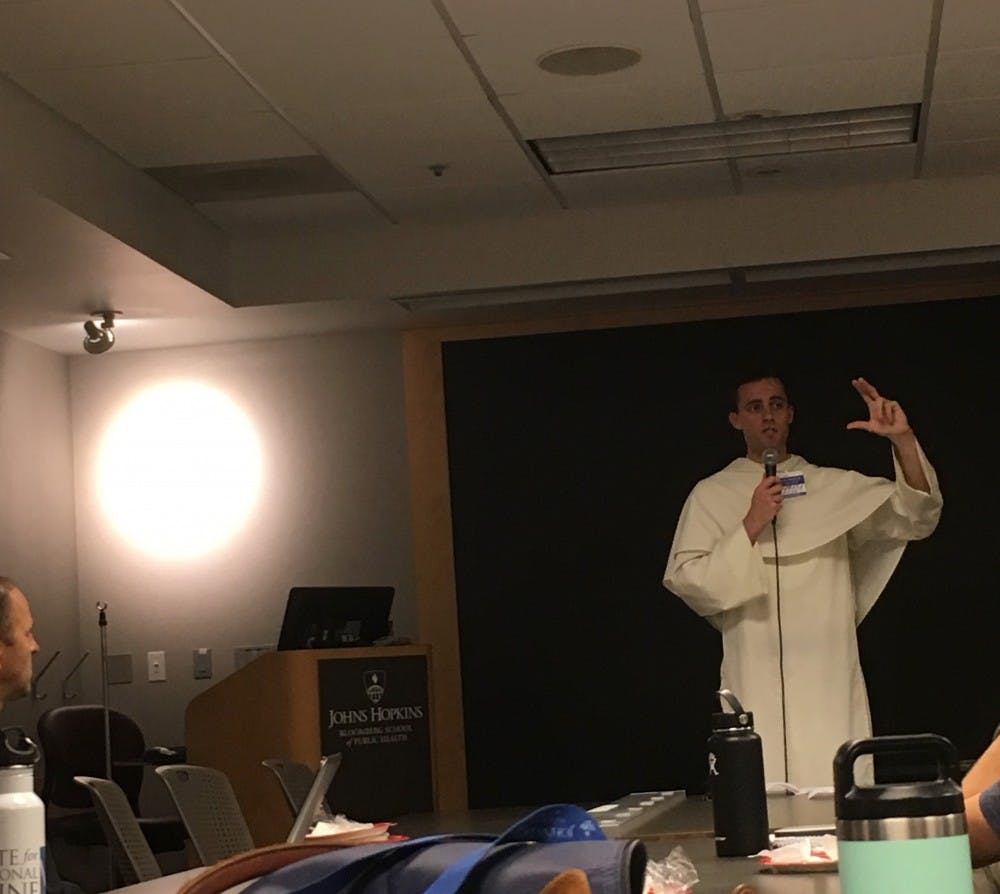The Bloomberg School of Public Health hosted Gregory Pine, the Thomistic Institute’s assistant director for campus outreach, last Tuesday. Pine spoke on the relationship between science and faith, as well as on how the two can serve as complements to one another.
Pine began his talk by making distinctions between science and faith to establish the goal of his discussion. He described religion as a more primitive field than the field of science.
“Science does not discredit faith if both are understood properly,” he said. “If practiced well, the disciplines do not generally conflict. In fact, they investigate different things under different aspects or lights with different methodologies. They can, in truth, be complementary in their consideration and interrogation of reality.”
The lecture was divided into three parts. Pine first discussed the nature of reality, then moved on to discuss both the philosophy of science and the philosophy of faith.
Pine distinguished between faith and science first by focusing on the material goal of each discipline.
“What we are considering in science is the world as mathematically quantifiable. So what is under consideration is what exercises force,” Pine said. “Faith, strictly speaking, is not a science but is the disposition that informs one’s approach to theology and mysticism.”
As he detailed his philosophy of faith, Pine explained that unlike science, which is intended to focus purely on provable facts and rationality, faith-based discourse is centered on testimony.
Pine said that believers can have certainty that exceeds science, by virtue of the belief that the testator is infallible. Though Pine admitted that some may find this idea irrational, he provided a simple analogy as clarification.
“The certainty of a faith-claim hinges on the testator,” he said. “I do not think you have proof that your parents are your parents, but I think most of us find them reliable in this regard. We do not say, ‘Prove it! Until such time comes, I will never hug you.’”
Pine discussed three aspects of the philosophical background of faith. One part can be seen as the aspect of believing God and trusting God to speak the truth. Another is to believe in God, believing in what God has revealed to mankind and his claims on life. Lastly, Pine said, there is the dimension of believing unto God, which he explained as the effective purpose of following God’s will for each human being.
“Faith is a habit of mind whereby eternal life is begun in us, making the intellectual descent to what is none apparent,” he said. “Faith is the assurance of things hoped for in the evidence of things unseen.”
Three audience members from different fields spoke with The News-Letter, explaining their thoughts on the lecture’s topic.
Aaron Simpson, a music producer based in Baltimore, chose to attend the event as he was attracted to the discussion topic on the contradictions between science and faith.
“Something funny on the History Channel two Fridays ago... was showing how things in the Bible are equated to things scientifically,” Simpson said. “So, we were sitting there — me and my friend — just looking at it. When we saw [the event], we were thinking, ‘This is just what we need, so we might as well come down and take a look.’”
Michael DeAscanis, a chaplain on the board of the Catholic Medical Association Baltimore Guild, explained that, through his work at the Hopkins Hospital, he has come across the science-faith debate in the past.
DeAscanis told the The News-Letter that he believes that faith and science should be able to achieve a level of harmony.
“What Jesus taught us is also in agreement with the natural world that we study,” he said. “We need to look for a common truth on the human experience of life where both science and faith are in harmony. We are all looking for the good of the human person.”
Amy Erardi, an X-ray technician who trained at Hopkins and is an employee at the Evangelization Office of the Archdiocese of Baltimore, agreed.
“Sometimes we think there is no room for both science and faith,” she said. “It is very important to know that they intersect and there is a balance. We need to have science and bring back the philosophy to learn how to intertwine them.”





